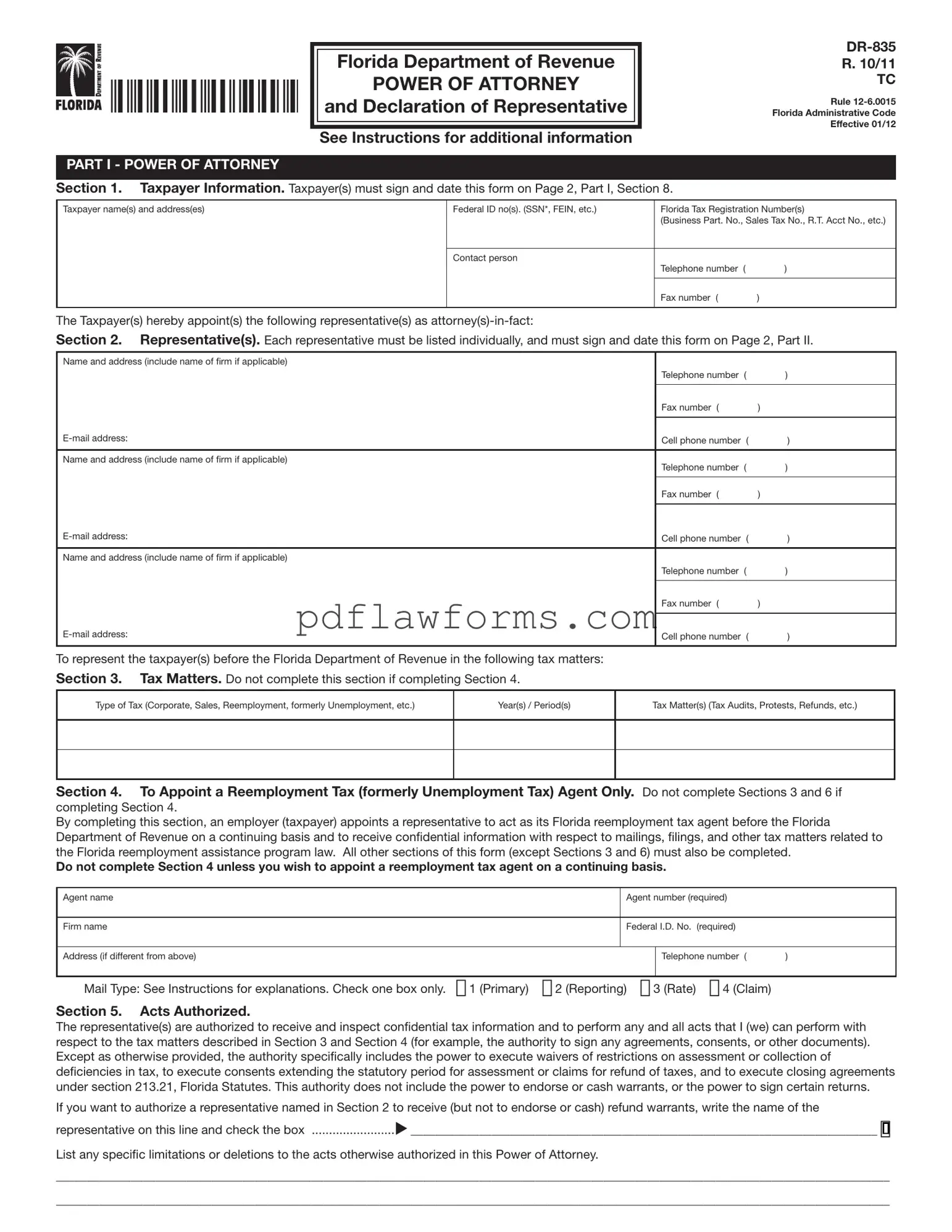The Tax Power of Attorney (POA) DR 835 form serves as an essential tool for individuals seeking to grant authority to another person to act on their behalf in tax matters. This form is particularly significant for those who may not have the ability or time to manage their tax obligations directly. By completing the DR 835, taxpayers can designate a representative, allowing them to handle specific tax-related issues such as filing returns, negotiating with tax authorities, or receiving confidential information. It is crucial to ensure that the form is filled out accurately, as any errors could lead to delays or complications in processing. Additionally, the form includes various sections that require careful attention, including the taxpayer's information, the representative's details, and the scope of authority granted. Understanding these components is vital for both the taxpayer and the appointed representative to ensure compliance and effective communication with tax agencies. Overall, the Tax POA DR 835 form is a valuable resource for those navigating the complexities of tax responsibilities, offering peace of mind and clarity in financial management.
